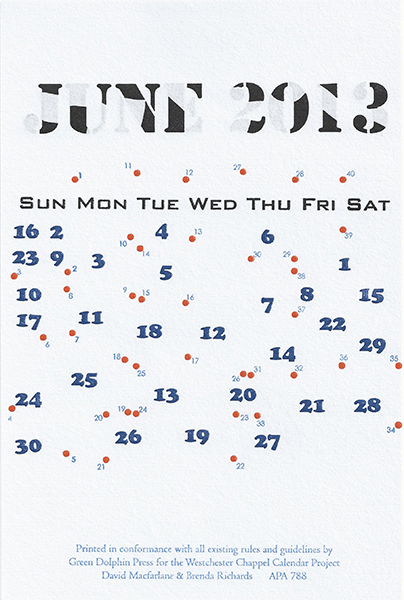| |
|||||
 |
Date: November, 2012 Computer composition and printed from magnesium plates Our Chappel, the Westchester Chappel, has been having an ongoing discussion about what consitutes a calendar, and whether “art” or “utility” is paramount in these printing projects. Some members put utility on top, and insist that the calendar page must give you all the essential information you expect from a calendar: month, year, day of the month and day of the week. Others think that this is more of an artistic exercise: if you want a calendar, get one at a drug store. I'm in both camps: I think a calendar should be useful, but it also should be interesting. I like making calendars interesting by pushing the limits of what makes them practical. One point of discussion in the Westchester Chappel was whether it is expected that one would write on the calendar. The most practical exponents said “of course”; the more artful said “no way”. I took this as my point of departure and decided to make a calendar that you had to write on to make it useful. I hope it is obvious that it is a connect-the-dots page. Some people ask me, “what do you get when you connect the dots?” The answer is “a calendar for June 2013.” Mouse over the calendar to the right to see the lines appear. It’s clear to me that this is now a fully functional calendar: June 19 gets grouped under the Wednesday title once you draw the lines; the rest follow in the same way. The paper is semi-translucent, so you have to hold it up to the light to complete the letters in the title. (The paper is Japanese Masa paper, made from sulphite pulp with a very interesting tooth on one side and shiny smooth on the other - it was fun to work with.) I thought of fracturing all the numbers for the days, but that would have made it too difficult to actually use. |
||||
| See large (330Kb) image | |||||